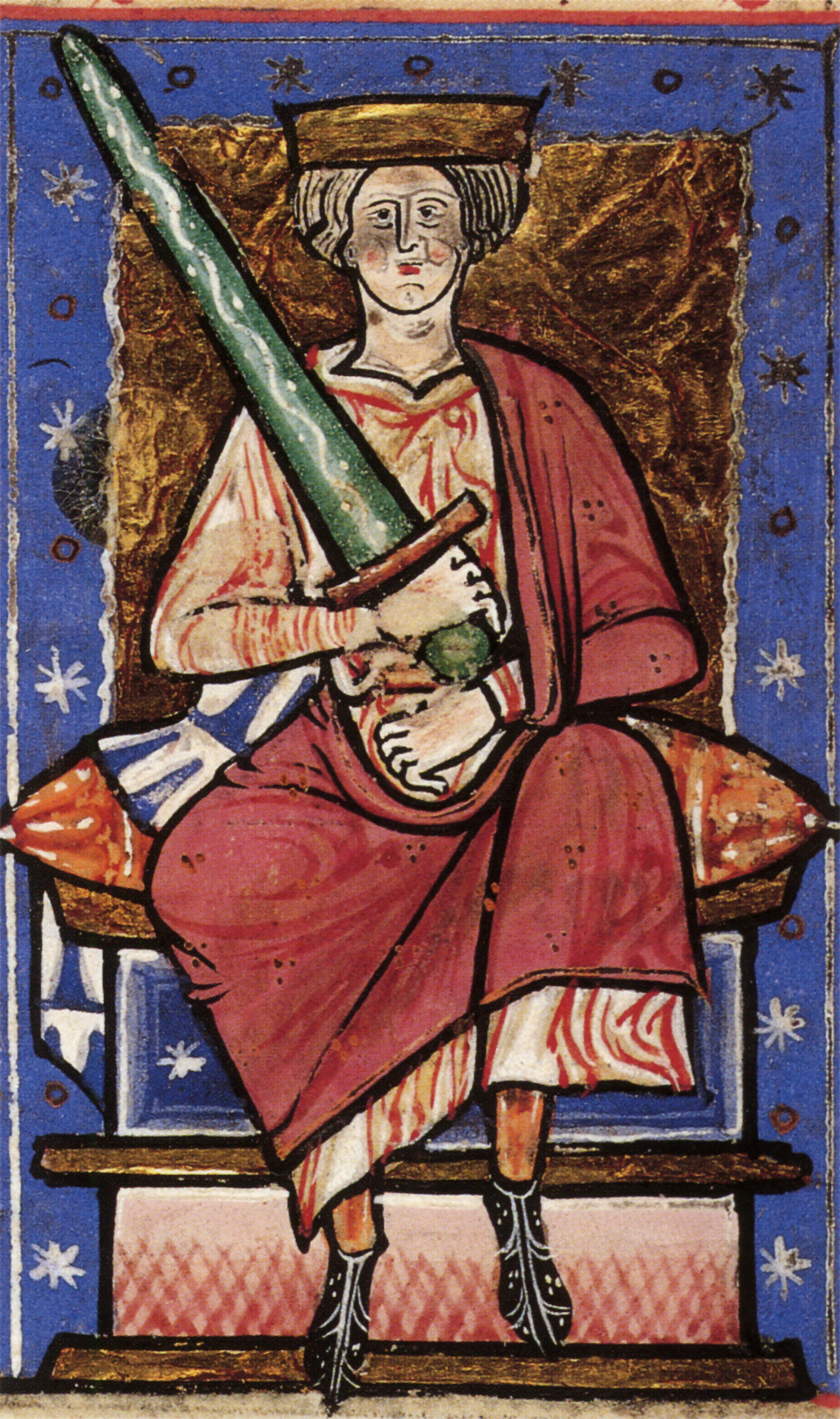Tags
Æthelred the Unready, Cnut the Great, coronation, Edmund Ironside, Edward the Confessor, Emma of Normandy, Harthacnut, King of Denmark, King of the English, Sweyn Forkbeard, Winchester Cathedral
Edward the Confessor (c. 1003 – January 5, 1066) was an Anglo-Saxon King of the English. Usually considered the last king of the House of Wessex, he ruled from 1042 to 1066.
Edward was the seventh son of Æthelred the Unready, and the first by his second wife, Emma of Normandy, daughter of the Norman Duke Richard the Fearless and Gunnora (c. 950 – c. 1031). The names of Gunnor’s parents are unknown, but Robert of Torigni wrote that her father was a forester from the Pays de Caux and according to Dudo of Saint-Quentin she was of noble Danish ancestry.
Edward was born between 1003 and 1005 in Islip, Oxfordshire, and is first recorded as a ‘witness’ to two charters in 1005. He had one full brother, Alfred, and a sister, Godgifu. In charters he was always listed behind his older half-brothers, showing that he ranked beneath them.
During his childhood, England was the target of Viking raids and invasions under Sweyn Forkbeard and his son, Cnut. Following Sweyn’s seizure of the throne in 1013, Emma fled to Normandy, followed by Edward and Alfred, and then by Æthelred. Sweyn died in February 1014, and leading Englishmen invited Æthelred back on condition that he promised to rule ‘more justly’ than before.
Æthelred agreed, sending Edward back with his ambassadors. Æthelred died in April 1016, and he was succeeded by Edward’s older half-brother Edmund Ironside, who carried on the fight against Sweyn’s son, Cnut. According to Scandinavian tradition, Edward fought alongside Edmund; as Edward was at most thirteen years old at the time, the story is disputed.
Edmund died in November 1016, and Cnut became undisputed king. Edward then again went into exile with his brother and sister; in 1017 his mother married Cnut. In the same year, Cnut had Edward’s last surviving elder half-brother, Eadwig, executed.
Edward spent a quarter of a century in exile, probably mainly in Normandy, although there is no evidence of his location until the early 1030s. He probably received support from his sister Godgifu, who married Drogo of Mantes, count of Vexin in about 1024.
Cnut died in 1035, and Harthacnut succeeded him as king of Denmark. It is unclear whether he intended to keep England as well, but he was too busy defending his position in Denmark to come to England to assert his claim to the throne. It was therefore decided that his elder half-brother Harold Harefoot should act as regent, while Emma held Wessex on Harthacnut’s behalf.
In 1036, Edward and his brother Alfred separately came to England. Emma later claimed that they came in response to a letter forged by Harold inviting them to visit her, but historians believe that she probably did invite them in an effort to counter Harold’s growing popularity.
Alfred was captured by Godwin, Earl of Wessex who turned him over to Harold Harefoot. He had Alfred blinded by forcing red-hot pokers into his eyes to make him unsuitable for kingship, and Alfred died soon after as a result of his wounds. The murder is thought to be the source of much of Edward’s hatred for Godwin and one of the primary reasons for Godwin’s banishment in autumn 1051.
In 1037, Harold was accepted as king, and the following year he expelled Emma, who retreated to Bruges. She then summoned Edward and demanded his help for Harthacnut, but he refused as he had no resources to launch an invasion, and disclaimed any interest for himself in the throne. Harthacnut, his position in Denmark now secure, planned an invasion, but Harold died in 1040, and Harthacnut was able to cross unopposed, with his mother, to take the English throne.
In 1041, Harthacnut invited Edward back to England, probably as heir because he knew he had not long to live. The 12th-century Quadripartitus, in an account regarded as convincing by historian John Maddicott, states that he was recalled by the intervention of Bishop Ælfwine of Winchester and Earl Godwin.
Edward met “the thegns of all England” at Hursteshever, probably modern Hurst Spit opposite the Isle of Wight. There he was received as king in return for his oath that he would continue the laws of Cnut. According to the Anglo-Saxon Chronicle Edward was sworn in as king alongside Harthacnut, but a diploma issued by Harthacnut in 1042 describes him as the king’s brother.
Following Harthacnut’s death on June 8, 1042, Godwin, the most powerful of the English earls, supported Edward, who succeeded to the throne. The Anglo-Saxon Chronicle describes the popularity he enjoyed at his accession – “before he [Harthacnut] was buried, all the people chose Edward as king in London.” Edward was crowned at the cathedral of Winchester, the royal seat of the West Saxons, on April 3, 1043.




